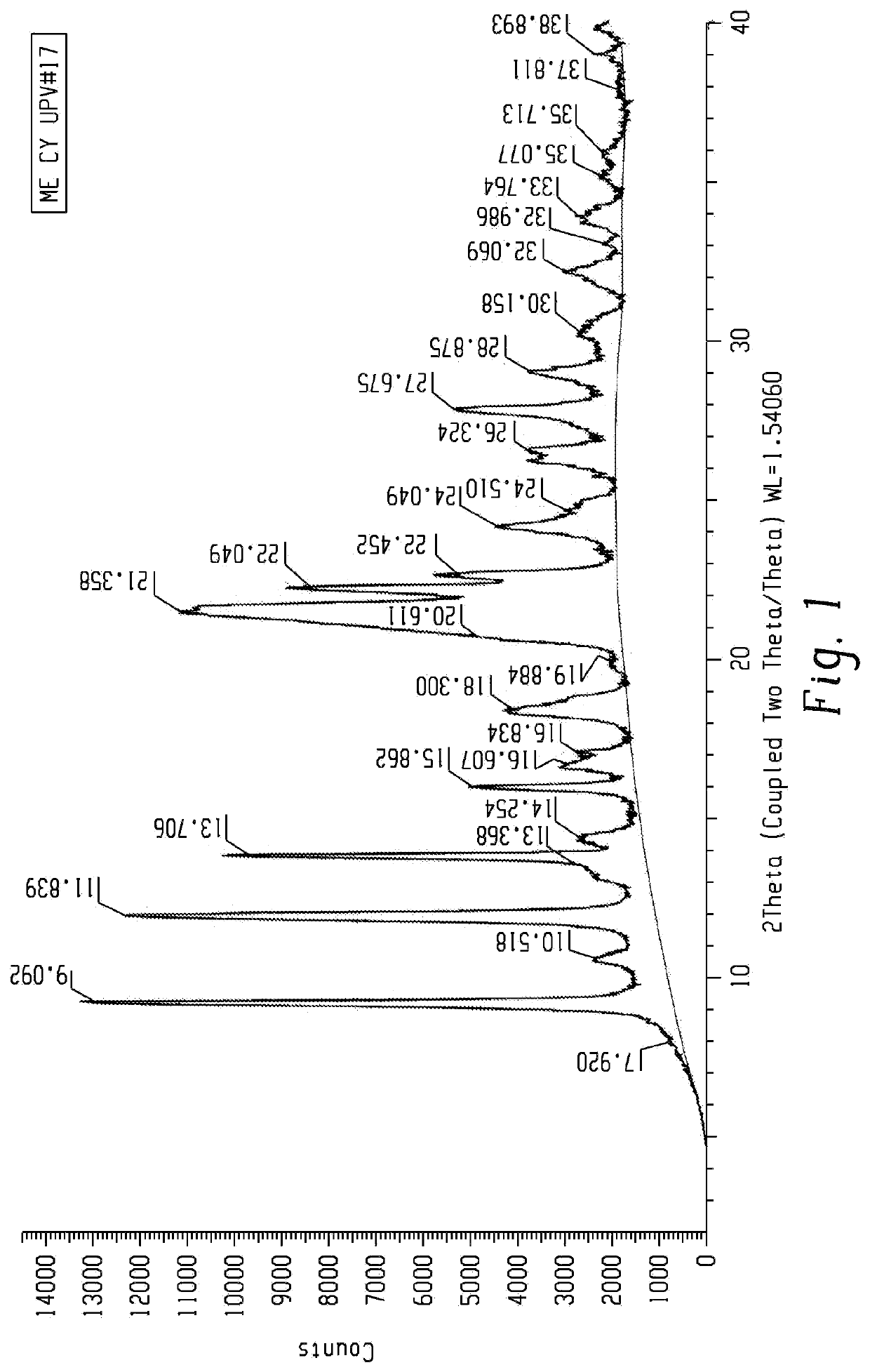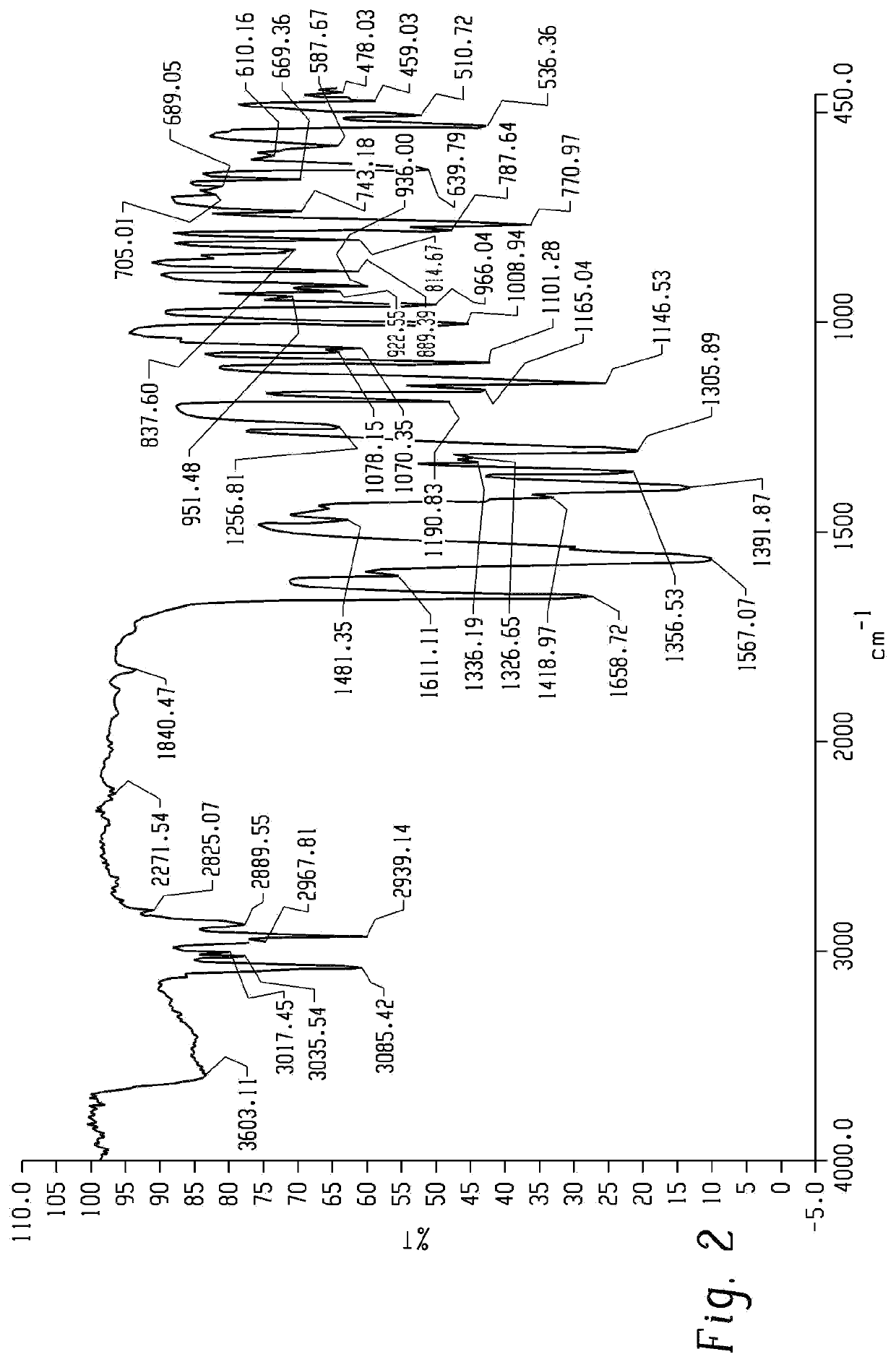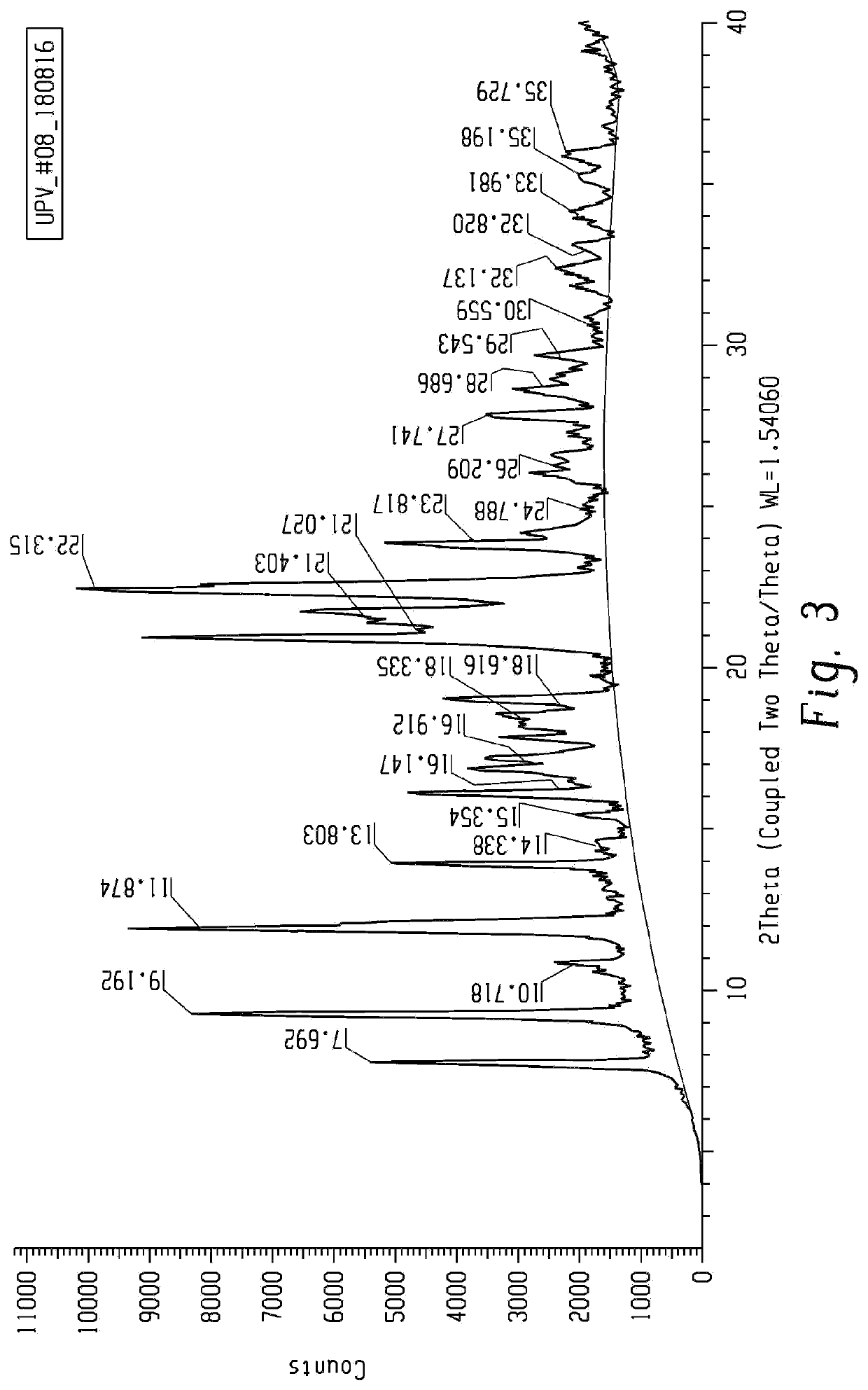Polymorphs of mesotrione metal chelate and preparation process
a mesotrione metal chelate and polymorph technology, applied in the field of polymorphs of mesotrione metal chelate, can solve the problems of chemical degradation, aggravated problems, and insoluble or partially insoluble active ingredients of mesotrione water-based formulations, and achieve the effect of improving the toxicological profil
- Summary
- Abstract
- Description
- Claims
- Application Information
AI Technical Summary
Benefits of technology
Problems solved by technology
Method used
Image
Examples
example 1
or Preparing Mesotrione Copper Chelate Form I
[0166]A slurry of mesotrione was prepared by adding 522 g of mesotrione into 2 lts of water. The pH of the slurry was raised to the range of 7-10 with 20% sodium hydroxide solution. The mixture was stirred for one hour followed by the addition of 30% copper sulfate solution. The reaction mixture was stirred for 2-3 hours and the pH of the mixture was observed in the range of 4.8-5.2. The resulting slurry of mesotrione copper chelate form I was filtered, washed with hot water and dried under vacuum (555 gm). A sample was analyzed by p-XRD and the spectra obtained is presented in FIG. 1.
example 2
or Preparing Mesotrione Copper Chelate Form II
[0167]A slurry of mesotrione was prepared by adding 345 g of mesotrione into 1.4 lts of water. The pH of the slurry was raised to the range of 6-9 with ammonia solution. The mixture was stirred for one hour followed by the addition of 20% copper sulfate solution. The reaction mixture was stirred for 2-3 hours and the pH of the mixture was observed in the range of 4.5-5.5. The resulting slurry of mesotrione copper chelate form II was filtered, washed with hot water and dried under vacuum (372 gm). A sample was analyzed by p-XRD and the spectra obtained is presented in FIG. 111.
example 3
mulsion Formulation of Mesotrione and S-Metolachlor According to the Present Invention has been Prepared as Follows
[0168]a) Preparation Mesotrione (35)% suspension concentrate(SC)
[0169]
Ingredients% (w / w)Mesotrione copper chelate35form Ipropylene glycol6.0DM water (QS)59.0Total100
[0170]Procedure: Mesotrione copper chelate form I was mixed with the listed ingredients and the mixture was homogenized by stirring and subjected to wet grinding to achieve required particle size.[0171]b) Preparation of S-Metolachlor (65)% oil-in-water emulsion(EW)
[0172]
Ingredients% (w / w)S-metolachlor66.67EO PO block copolymer2.65DM water (QS)30.68Total100
[0173]Procedure: S-metolachlor was mixed with the listed ingredients and homogenized by stirring well to form the oil-in-water emulsion.[0174]c) Preparation of Mesotrione+S-Metolachlor suspoemulsion formulation(SE)
[0175]
Ingredients% (w / w)S-metolachlor 65 EW58.5Mesotrione copper chelate10.86form I 35 SCBenoxacor2.0EO PO block copolymer8.0Propylene glycol3.0D...
PUM
| Property | Measurement | Unit |
|---|---|---|
| dispersion | aaaaa | aaaaa |
| polymorphic | aaaaa | aaaaa |
| stability | aaaaa | aaaaa |
Abstract
Description
Claims
Application Information
 Login to View More
Login to View More - R&D
- Intellectual Property
- Life Sciences
- Materials
- Tech Scout
- Unparalleled Data Quality
- Higher Quality Content
- 60% Fewer Hallucinations
Browse by: Latest US Patents, China's latest patents, Technical Efficacy Thesaurus, Application Domain, Technology Topic, Popular Technical Reports.
© 2025 PatSnap. All rights reserved.Legal|Privacy policy|Modern Slavery Act Transparency Statement|Sitemap|About US| Contact US: help@patsnap.com



